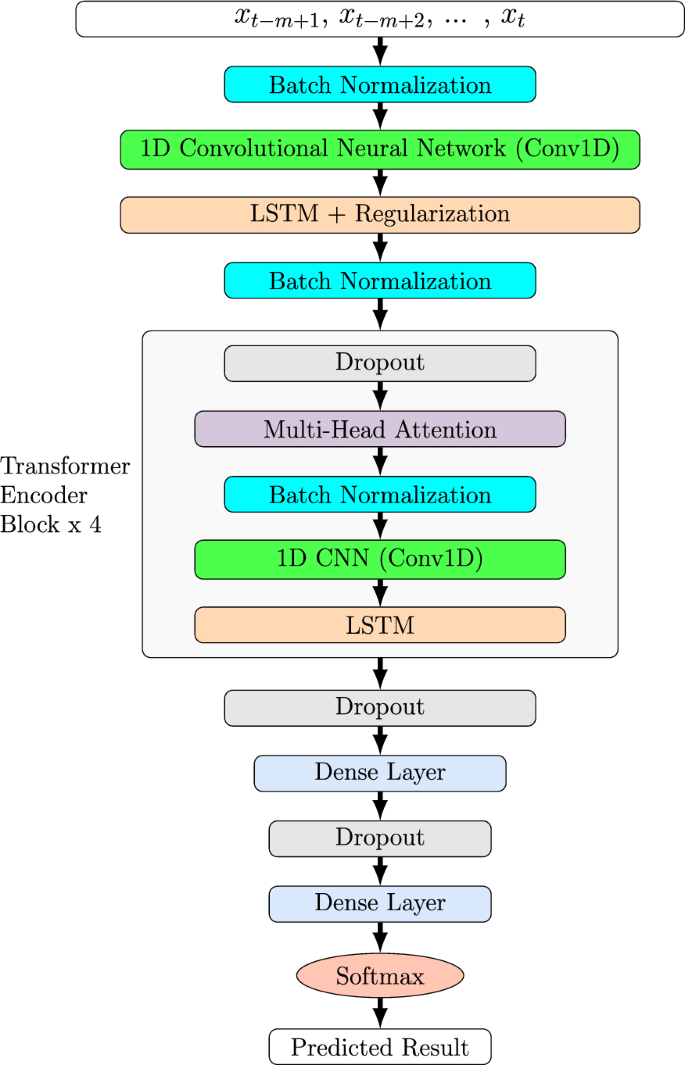Operational prediction of solar flares using a transformer-based framework

Abstract
Solar flares are explosions on the Sun. They happen when energy stored in magnetic fields around solar active regions (ARs) is suddenly released. Solar flares and accompanied coronal mass ejections are sources of space weather that negatively affect a variety of technologies at or near Earth, ranging from blocking high-frequency radio waves used for radio communication to degrading power grid operations. Monitoring and providing early and accurate prediction of solar flares is therefore crucial for preparedness and disaster risk management.
In this article, we present a transformer-based framework, named SolarFlareNet, for predicting whether an AR would produce a γ-class flare within the next 24 to 72 h. We consider three γ classes, namely the ≥M5.0 class, the ≥M class and the ≥C class, and build three transformers separately, each corresponding to a γ class. Each transformer is used to make predictions about its corresponding γ-class flares. The crux of our approach is to model data samples in an AR as time series and to use transformers to capture the temporal dynamics of the data samples. Each data sample consists of magnetic parameters taken from Space-weather HMI Active Region Patches (SHARP) and related data products. We survey flare events that occurred from May 2010 to December 2022 using the Geostationary Operational Environmental Satellite X-ray flare catalogs provided by the National Centers for Environmental Information (NCEI) and build a database of flares with identified ARs in the NCEI flare catalogs. This flare database is used to construct labels of the data samples suitable for machine learning. We further extend the deterministic approach to a calibration-based probabilistic forecasting method. The SolarFlareNet system is fully operational and capable of making near real-time predictions of solar flares on the Web.
太阳耀斑是太阳上的爆炸。当储存在太阳活动区(ARs)周围磁场中的能量突然释放时,就会发生这种情况。太阳耀斑和伴随的日冕物质抛射是空间天气的来源,对地球上或地球附近的各种技术产生负面影响,从阻挡用于无线电通信的高频无线电波到降低电网运行。因此,监测和提供太阳耀斑的早期和准确预测对备灾和灾害风险管理至关重要。
在本文中,我们提出了一个基于变压器的框架,名为SolarFlareNet,用于预测AR是否会在未来24至72小时内产生γ级耀斑。我们考虑了三个γ级,即≥M5.0级,≥M级和≥C级,并分别构建了三个变压器,每个变压器对应一个γ级。每个变压器都用来预测其对应的γ级耀斑。我们方法的关键是将AR中的数据样本建模为时间序列,并使用变压器捕获数据样本的时间动态。每个数据样本由来自空间气象人机界面活动区域补丁(SHARP)和相关数据产品的磁参数组成。利用美国国家环境信息中心(NCEI)提供的地球静止运行环境卫星x射线耀斑目录,对2010年5月至2022年12月发生的耀斑事件进行了调查,并建立了NCEI耀斑目录中已识别ARs的耀斑数据库。该耀斑数据库用于构造适合机器学习的数据样本的标签。我们进一步将确定性方法扩展为基于校准的概率预测方法。SolarFlareNet系统已全面投入使用,能够在网上对太阳耀斑进行近乎实时的预测。
Discussion and conclusion
In this article, we present a novel transformer-based framework to predict whether a solar active region (AR) would produce a γ-class flare within the next 24 to 72 h where γ is ≥M5.0, ≥M, or ≥C. We use three transform models to handle the three classes of flares individually and separately. All three transformer models perform binary predictions. We collect ARs with flares that occurred between 2010 and 2022 from the GOES X-ray flare catalogs provided by the National Centers for Environmental Information (NCEI). In addition, we downloaded SHARP magnetic parameters from the Joint Science Operations Center (JSOC). Each data sample contains SHARP parameters suitable for machine learning. We conducted experiments using 10-fold cross-validation9. Based on the experiments, our transformer-based framework generally performs better than closely related methods in terms of TSS (true skill statistics), as shown in Table 1. We further extend our framework to produce probabilistic forecasts of flares and implement the framework into an operational, near real-time flare forecasting system accessible on the Web. The probabilistic framework is comparable to a closely related method9 in terms of BS (Brier score) and BSS (Brier skill score) when making 24-h forecasts, as shown in Table 3, although the existing method did not make 48- or 72-h forecasts. Thus, we conclude that SolarFlareNet is a feasible tool for producing flare forecasts within 24 to 72 h.
在本文中,我们提出了一种基于Transformer的新框架,用于预测太阳活动区域(AR)是否会在接下来的24到72小时内产生一个γ级耀斑,其中γ≥M5.0、≥M或≥C。我们使用三个转换模型分别处理这三类耀斑,并进行二元预测。我们从国家环境信息中心(NCEI)提供的GOES X射线耀斑目录中收集了2010年至2022年发生的带有耀斑的AR数据。此外,我们还从联合科学操作中心(JSOC)下载了SHARP磁参数。每个数据样本包含适用于机器学习的SHARP参数。我们使用10折交叉验证进行实验。根据实验结果,在TSS(真实技能统计量)方面,我们基于Transformer的框架通常比相关方法表现更好,如表1所示。我们进一步扩展了框架以生成耀斑的概率性预测,并将该框架实现为一个可在Web上访问的操作性、近实时耀斑预报系统。当进行24小时预报时,与相关方法9相比,在BS(布里尔评分)和BSS(布里尔技能得分)方面,概率性框架与之相当,如表3所示;尽管现有方法没有进行48小时或72小时预报。因此,我们得出结论:SolarFlareNet是一个可以在24到72小时内产生耀斑预报的可行工具。
Methods
Figure 2
Illustration of positive and negative data samples used in predicting ≥C-class flares. In the left panel, the red vertical line indicates the start time of a ≥C-class flare. The data samples collected in the 24 h prior to the red vertical line are labeled positive (in green color). In the right panel, the red vertical line indicates the start time of an A-class or B-class flare. The data samples collected in the 24 h prior to the red vertical line are labeled negative (in yellow color).
Figure 3
Architecture of SolarFlareNet.

























 557
557

 被折叠的 条评论
为什么被折叠?
被折叠的 条评论
为什么被折叠?








